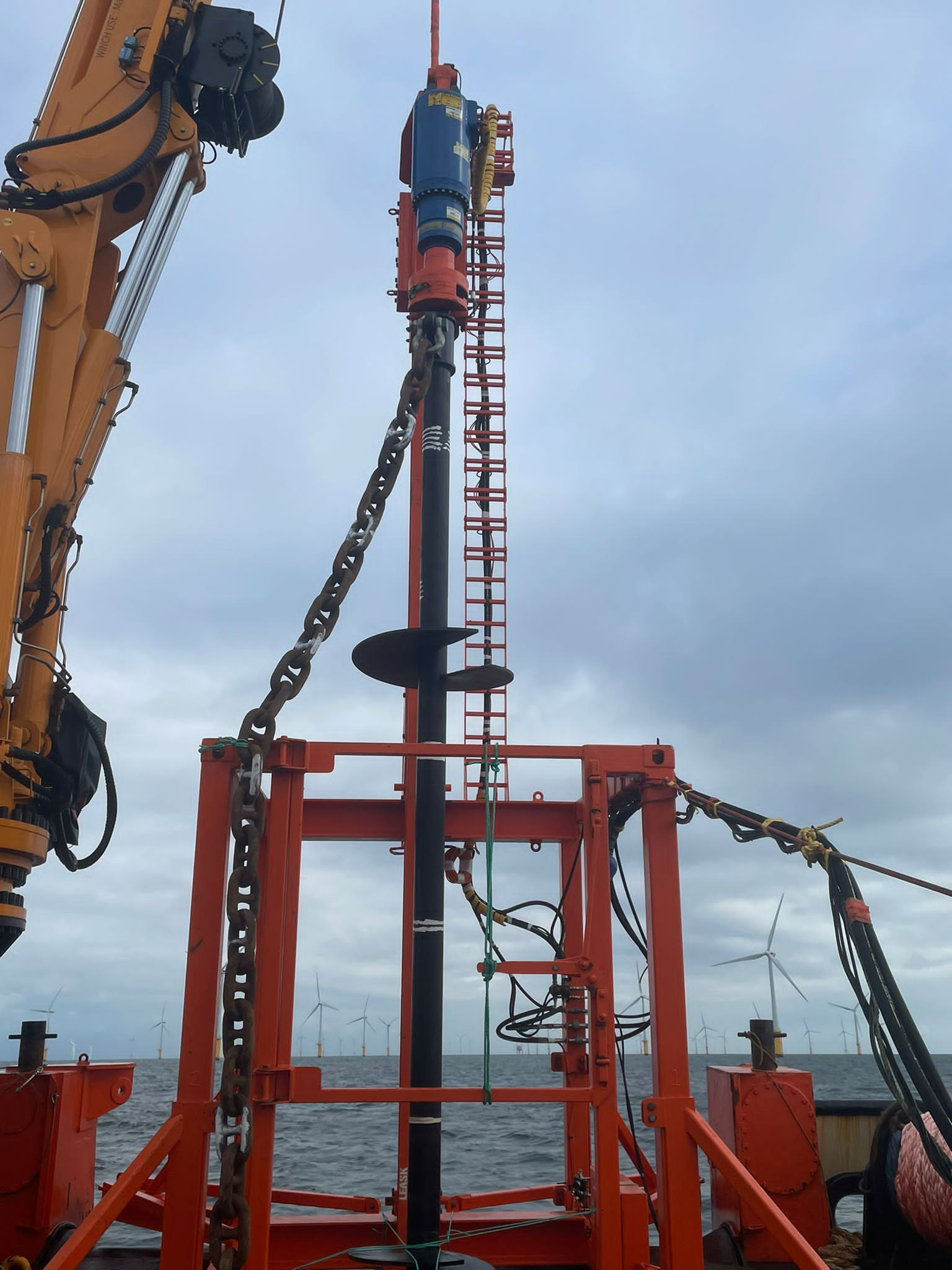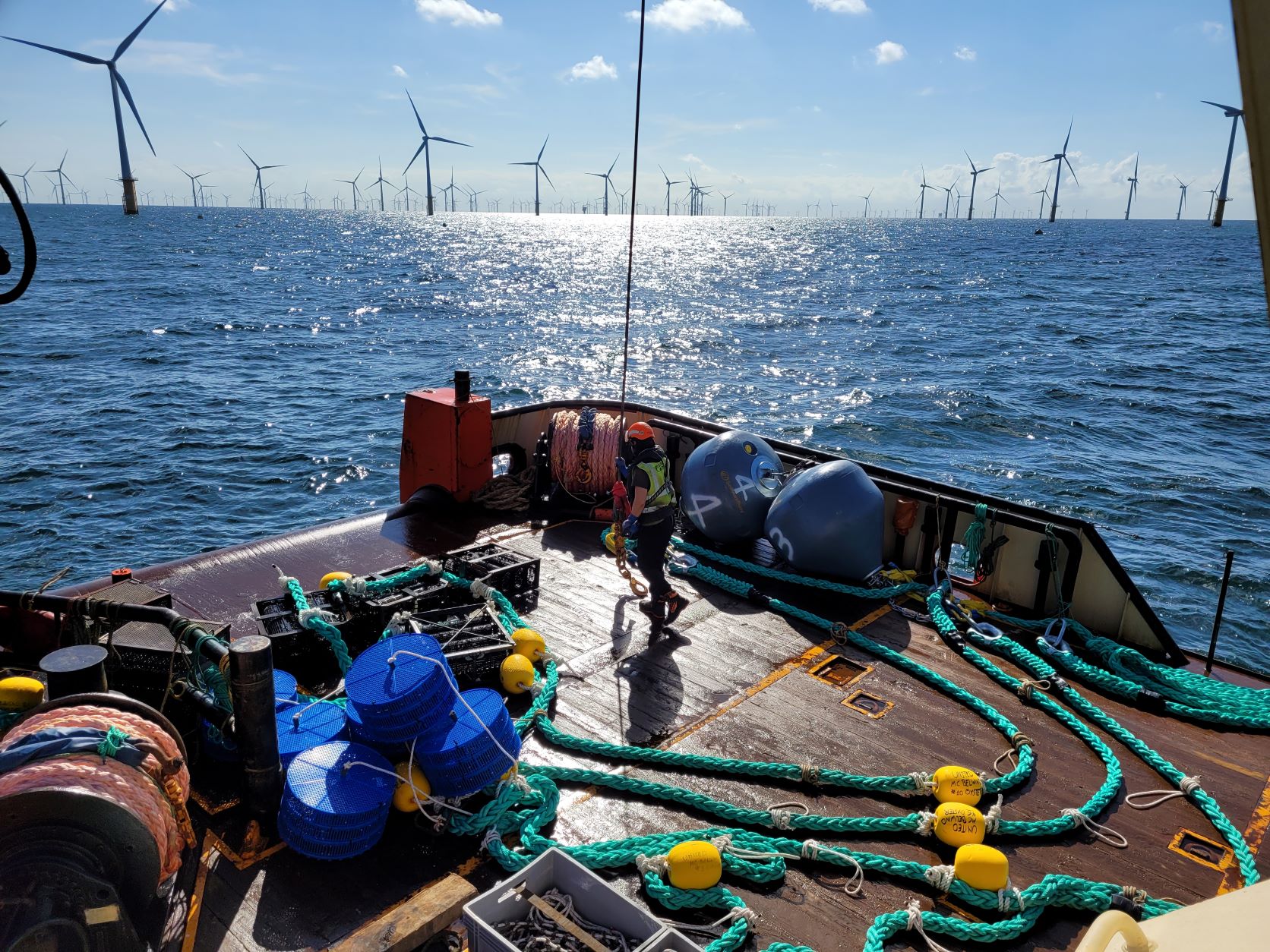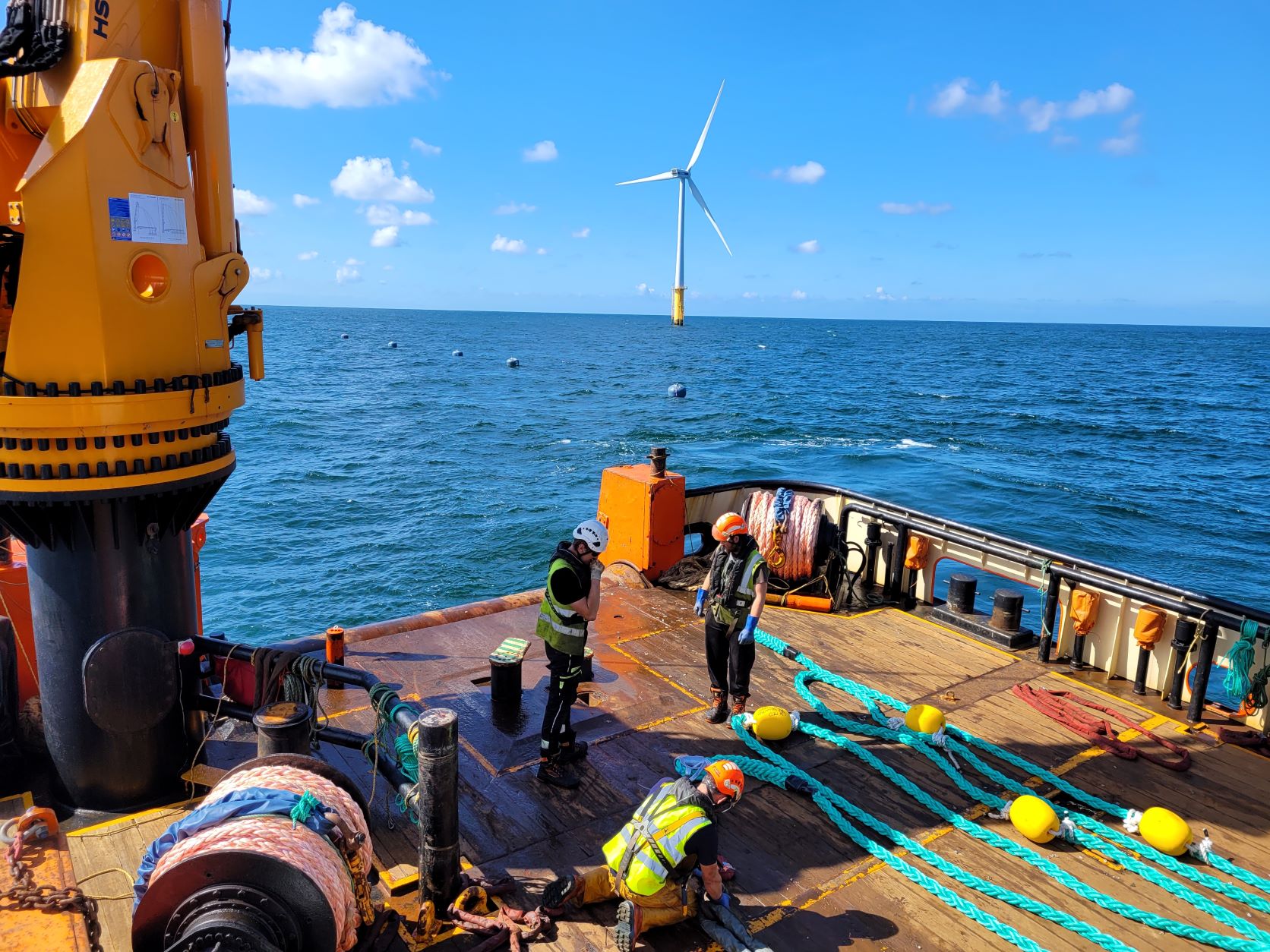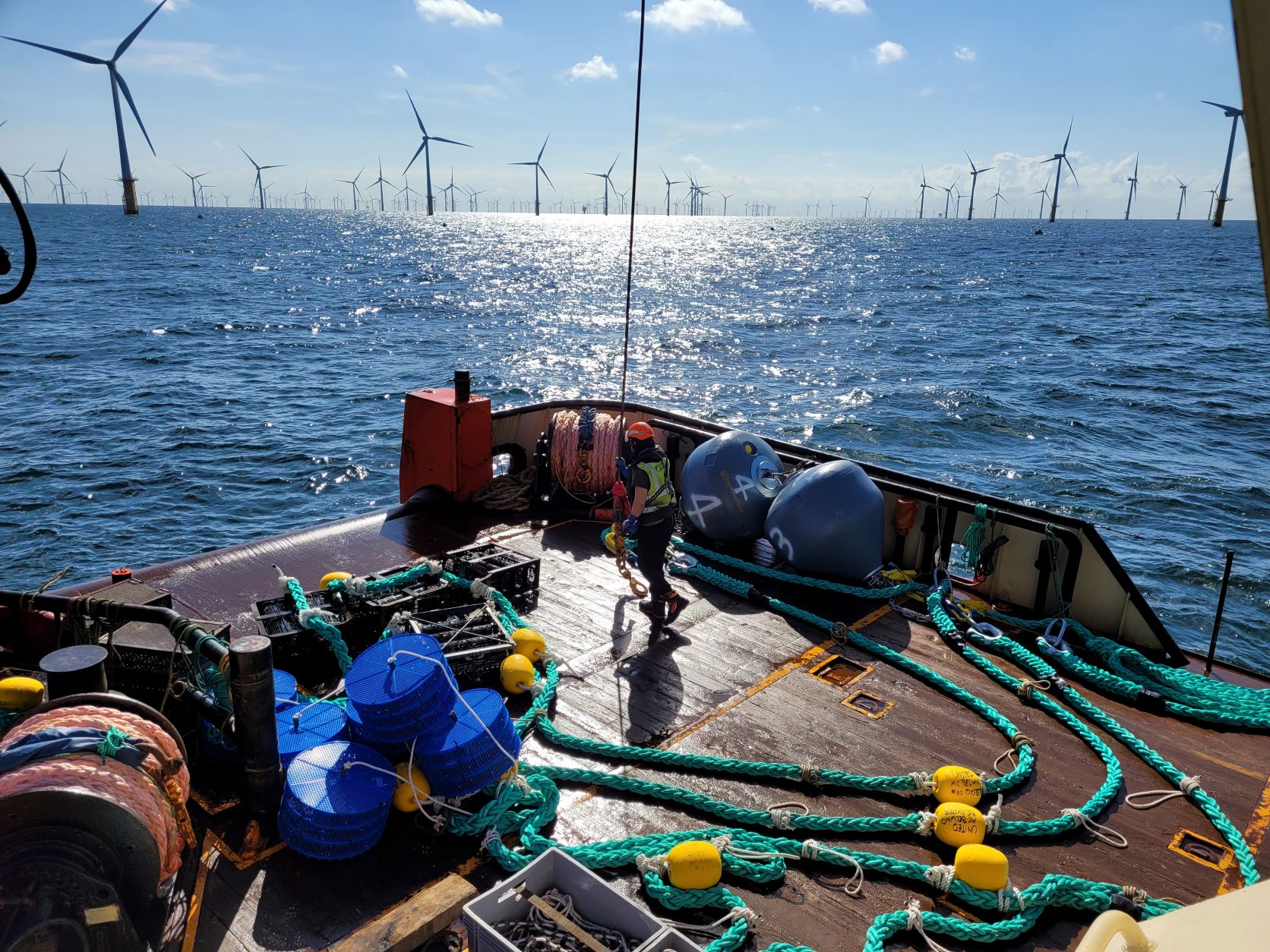Oyster and seaweed aquaculture in the Belgian offshore wind farm Belwind
The team of Jan De Nul Group team coordinated this unique mission in close collaboration with Parkwind, facilitator and the direct point of contact with the operational team of Belwind. It took subcontractor Leask Marine only a week time (including some weather delays) to complete the entire offshore campaign. Four screw anchors, all Leask Marine design, were drilled into the seabed using the Leask Marine Auger Submersible Drilling Rig (Fig. 1).

Fig. 1 : Offshore screw anchor installation in the H2020 UNITED project. Four screw anchors, all Leask Marine design, were drilled into the seabed using the Leask Marine Auger Submersible Drilling Rig.
Anchors chains were subsequently connected. This allowed, in a next step, to connect the aquaculture lines or so called backbones (Fig. 2). The backbone designs were carefully calculated by the Ghent University Maritime Technology Division Team and externally evaluated by Gael Force, allowing an optimal design to withstand the powerful offshore waves that can be encountered in the Belgian part of the North Sea. The oyster backbone was installed at seven meters below the water surface to provide a less hostile environment with lower wave impact at that depth for the European flat oysters (Ostrea edulis). To allow enough light penetration for the seaweeds (Saccharina latissima) to grow, whilst also escaping the highest impact of the waves at the surface, the seaweed line (Fig. 3) was installed at three meters below the water surface.

Fig. 2 : Preparation of the oyster backbone installation in offshore wind farm Belwind ©Annelies Declercq, H2020 UNITED project

Fig. 3 : Preparation of the installation of the seaweed longline with in the background the installed oyster backbone (grey buoys) in the offshore wind farm Belwind ©Annelies Declercq, H2020 UNITED project
Together with partner Brevisco, the Ghent University Lab of Aquaculture and Artemia Reference Center (Belgian pilot lead) and the Phycology lab prepared the oyster and seaweed backbones on shore. This meant connecting buoys and oyster structures that had proven to be most successful in the nearshore testing sites, to the aquaculture lines. The oysters were added to the structures right before their deployment at sea. The seeded seaweed nets will be installed later this year, when the temperature drops below 14°C.
The goal of this part of the project is to see whether European flat oyster and seaweed culture in an offshore wind farm in the Belgian part of the North Sea is feasible. Partner Colruyt Group will later on investigate the financial feasibility of the operations and partner Royal Belgian Institute of Natural Sciences (MARECO team) will monitor environmental impacts. We are looking forward to hopefully be able to offer a nice plate of Belgian oysters, decorated by Belgian seaweed on the (currently only scientific) plates by the end of the project, which is foreseen end of 2023.


